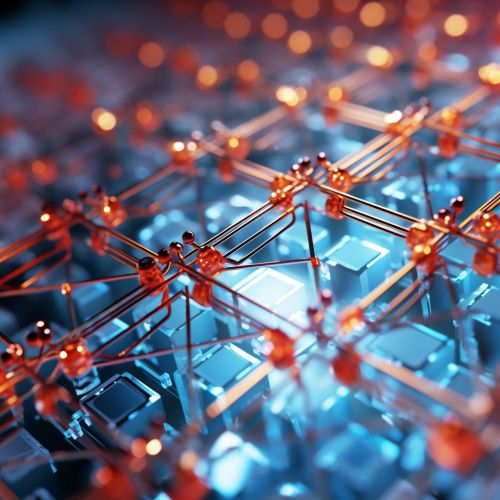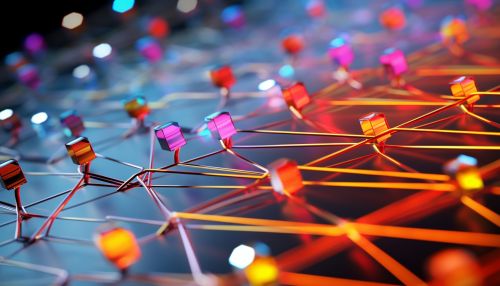Extrinsic semiconductor
Introduction
An extrinsic semiconductor is a type of semiconductor that has been intentionally doped, that is, impurities have been introduced into the crystal structure to alter its electrical properties. This is in contrast to an intrinsic semiconductor, which is pure and undoped. The doping process is a critical aspect of semiconductor technology and is used to control the number and type of charge carriers within the semiconductor material.
Doping Process
The doping process involves introducing impurities into the semiconductor material. These impurities are atoms from a doping agent, which is a material that is not a part of the semiconductor's crystal structure. The doping agent can either be a donor or an acceptor type. A donor type doping agent will introduce extra electrons into the semiconductor, making it an n-type extrinsic semiconductor. An acceptor type doping agent will introduce holes (absence of electrons) into the semiconductor, making it a p-type extrinsic semiconductor.


N-Type Extrinsic Semiconductor
An n-type extrinsic semiconductor is created by doping a pure semiconductor with donor impurities. These impurities have more valence electrons than the atoms of the semiconductor material. When these impurities are added, they can donate their extra electrons to the semiconductor. The majority carriers in an n-type semiconductor are electrons, while the minority carriers are holes.
P-Type Extrinsic Semiconductor
A p-type extrinsic semiconductor is created by doping a pure semiconductor with acceptor impurities. These impurities have fewer valence electrons than the atoms of the semiconductor material. When these impurities are added, they can accept electrons from the semiconductor, creating holes. The majority carriers in a p-type semiconductor are holes, while the minority carriers are electrons.
Electrical Properties
The electrical properties of extrinsic semiconductors are largely determined by the type and concentration of the doping agents used. The majority carriers, either electrons or holes, dominate the electrical conduction process. The minority carriers also contribute to the conduction process, but to a much lesser extent. The concentration of majority carriers is directly proportional to the doping concentration, while the concentration of minority carriers is inversely proportional to the doping concentration.
Applications
Extrinsic semiconductors are widely used in the manufacturing of electronic devices such as transistors, diodes, and integrated circuits. N-type and p-type semiconductors are often used together to form p-n junctions, which are the basic building blocks of many electronic devices.
